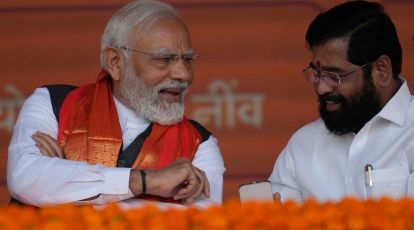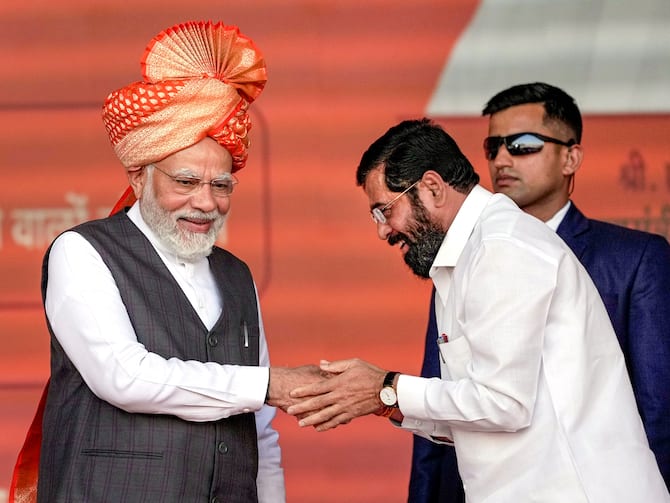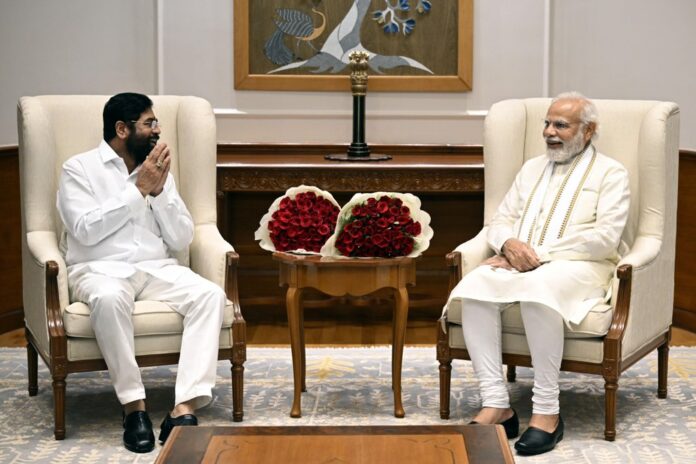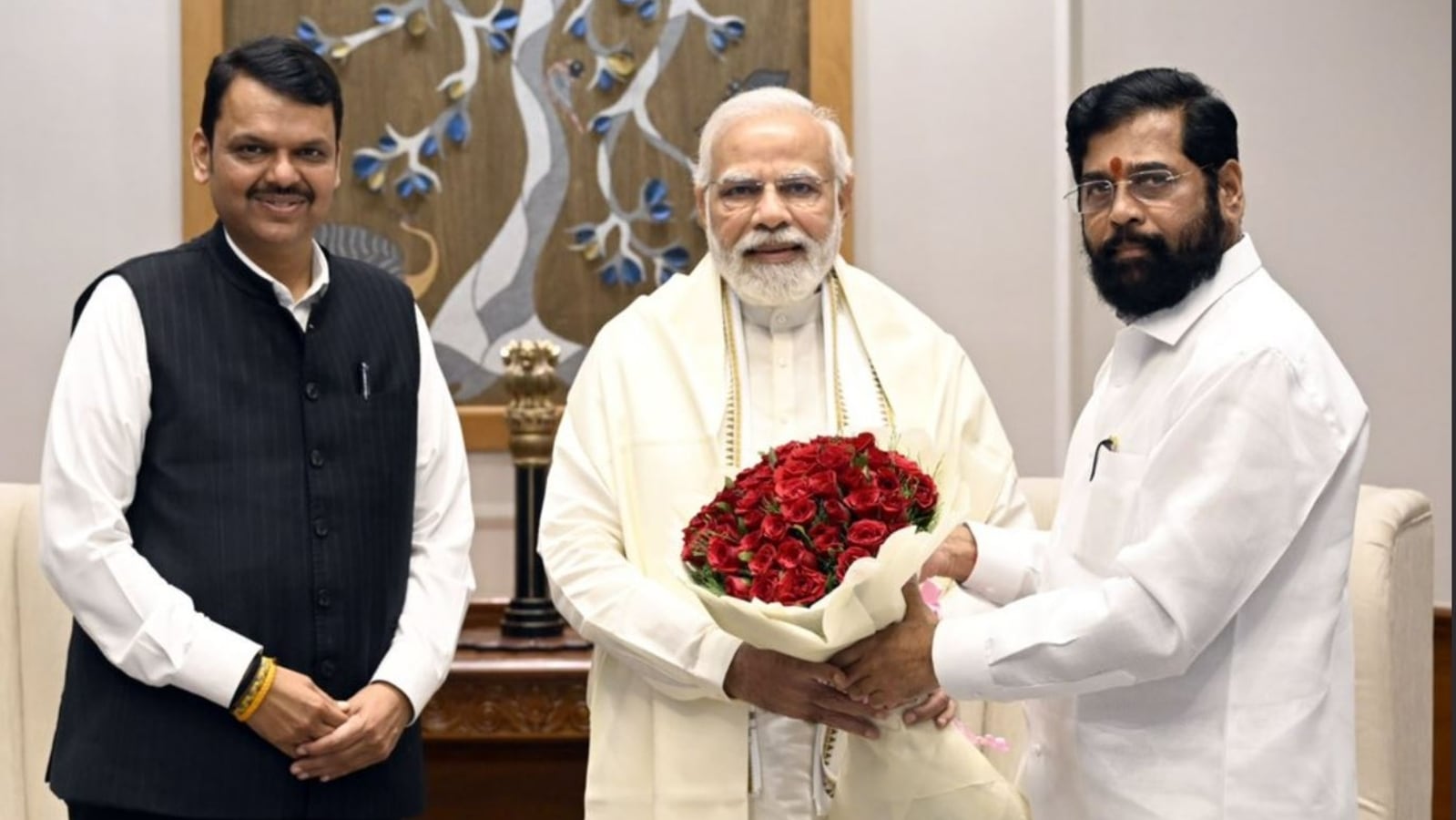A recent advertisement by Shiv Sena, featuring Eknath Shinde, has stirred up a brewing controversy in Maharashtra. The ad boldly claimed that Shinde is more popular than Devendra Fadnavis as the Chief Minister of Maharashtra, citing a survey conducted by Zee TV-Matrize. According to the survey, 26.1% of people in Maharashtra prefer Shinde as the chief minister, while 23.2% support Fadnavis. However, the intention of the advertisement was not to create a rift between Shinde and Fadnavis, but rather to emphasize the support for the BJP-Shiv Sena alliance, which garnered 49.3% of people’s backing. This ad has raised eyebrows and invited scrutiny for its omission of prominent figures like Balasaheb Thackeray and Devendra Fadnavis.
Controversial Ad Sparks Outrage: Shiv Sena’s Omission of Balasaheb Thackeray and Devendra Fadnavis Triggers Backlash
The advertisement featured a photograph of Eknath Shinde alongside Prime Minister Narendra Modi, and it was presented by Shiv Sena with the party’s iconic bow and arrow symbol. The ad hailed the duo as a “dream team” loved by all and praised their commendable teamwork, attributing their success in Maharashtra to recent welfare projects. However, Uddhav Sena MP Sanjay Raut was quick to point out the absence of Balasaheb Thackeray’s image, questioning the shift in the party’s allegiance. Raut remarked, “It was Balasaheb’s Shiv Sena earlier, but the advertisement has cleared the air. It has now become Modi-Shah’s Shiv Sena. Where is the image of the late Balasaheb Thackeray?”
Eknath Shinde attempted to downplay the perceived rivalry between himself and Devendra Fadnavis portrayed in the advertisement, highlighting that both of them received positive ratings. He emphasized their joint efforts in leading the state and driving overall development while actively involving the cabinet. Shinde stated, “The Deputy CM and I have received positive ratings. We are leading the state and propelling it forward. The Deputy CM and I are dedicated to comprehensive development, working in harmony with the entire cabinet. Ultimately, it is the people’s perception that matters.”
In a separate incident, Devendra Fadnavis canceled an event in Kohlapur that was attended by Eknath Shinde, citing health reasons. The Shiv Sena-BJP government clarified that there were no political motivations behind the cancellation.

The advertisement has also drawn criticism from NCP leader Ajit Pawar, who expressed astonishment at its content. Pawar remarked that in his entire political career, he had never seen such an advertisement. He highlighted the absence of photographs of Balasaheb Thackeray and Anand Dighe, stating, “They (Shiv Sena) claim to be soldiers of Balasaheb Thackeray, but Balasaheb Thackeray’s and Anand Dighe’s photos were missing from the advertisement.”
This controversy surrounding the advertisement has ignited a wave of public outrage, with many questioning the Shiv Sena’s stance and allegiance. The omission of Balasaheb Thackeray and Devendra Fadnavis has raised concerns about the party’s shifting dynamics and the growing influence of figures like Prime Minister Narendra Modi and Home Minister Amit Shah within the party. The ad’s messaging and selective use of visuals have only deepened the divide and sparked further debate within the political landscape of Maharashtra.
Explosive Ad Controversy: Divisive Campaign “Modi for India, Shinde for Maharashtra” Ignites Outrage

As the controversy unfolds, it serves as a reminder of the intricate dynamics and power struggles within political parties. The decisions made regarding image representation and messaging can have far-reaching consequences, shaping public opinion
and altering the course of political alliances. The fallout from this advertisement has underscored the need for careful consideration and transparency in political communications to avoid sowing seeds of discontent and division among supporters. The events that follow will undoubtedly shed more light on the ramifications of this controversy and its impact on the political climate of Maharashtra.
Additionally, the controversy surrounding the advertisement has also reignited discussions about the legacy of Balasaheb Thackeray, the founder of Shiv Sena, and his pivotal role in shaping the party’s ideology and identity. Many loyalists and supporters of Shiv Sena find it disconcerting that the ad failed to pay homage to Balasaheb Thackeray, whose contributions were instrumental in establishing the party’s stronghold in Maharashtra.
The omission of Devendra Fadnavis, the former Chief Minister of Maharashtra and a prominent leader in the state, further raises questions about the underlying motivations behind the advertisement. Critics argue that this deliberate exclusion hints at a shift in the party’s focus and a realignment of loyalties. The absence of Fadnavis, a key figure in Maharashtra politics, suggests a possible marginalization of his influence within the BJP-Shiv Sena alliance.


